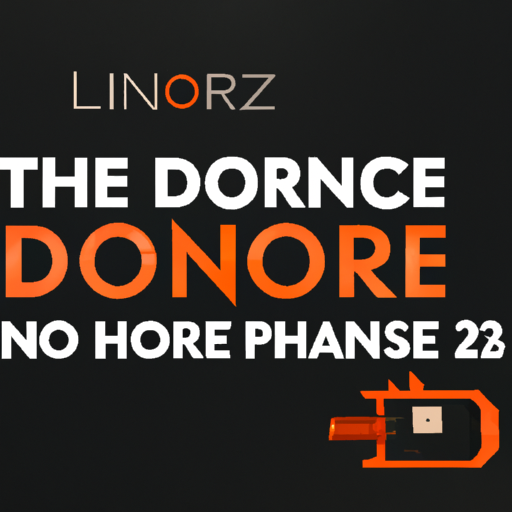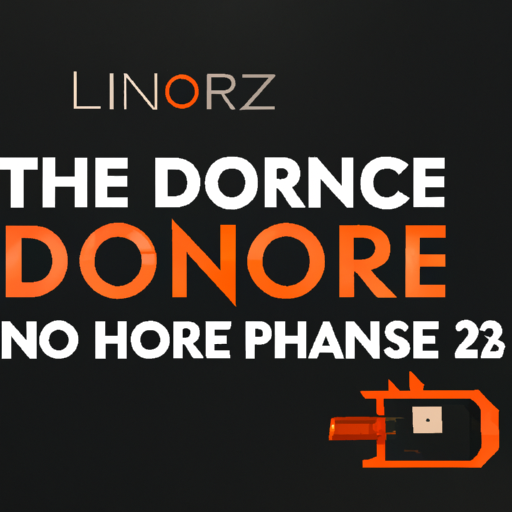Imagine being able to fly your drone for hours on end without worrying about the battery dying. With the new product “How Long Does A Drone Battery Last?” you can finally say goodbye to short flight times and hello to extended drone adventures. This innovative battery ensures that you can enjoy uninterrupted flights for a longer period, giving you the freedom and flexibility to capture breathtaking aerial shots without any limitations. Say goodbye to constantly swapping out batteries and hello to endless excitement with “How Long Does A Drone Battery Last?”

Factors Affecting Drone Battery Life
Battery Capacity
One of the most important factors affecting the battery life of a drone is the battery’s capacity. The capacity refers to the amount of energy that the battery can store, and it is usually measured in milliampere-hours (mAh). A higher capacity battery will typically last longer than a lower capacity one.
Drone Size and Weight
The size and weight of a drone also play a significant role in determining its battery life. Larger drones are generally equipped with larger batteries, which can store more energy and provide a longer flight time. On the other hand, smaller drones with lower battery capacity will have a shorter battery life.
Flight Conditions
The flight conditions in which a drone operates can have a direct impact on its battery life. Factors such as wind speed, temperature, and altitude can affect the drone’s power consumption. For example, flying against strong headwinds will require more power, leading to a shorter battery life. Similarly, flying at high altitudes or in extremely cold temperatures can reduce battery performance.
Flying Style
The way you fly your drone can also impact its battery life. Aggressive flying maneuvers, such as high-speed flights and continuous acceleration and deceleration, can drain the battery faster. On the other hand, flying in a more controlled and steady manner can help conserve battery power and extend its life.
Battery Chemistry
Different types of batteries can affect the overall battery life of a drone. The most common types of drone batteries are Lithium Polymer (LiPo), Nickel Cadmium (NiCd), and Nickel Metal Hydride (NiMH). Each type has its own characteristics and performance levels, which can influence the flight time of the drone.
Types of Drone Batteries
Lithium Polymer (LiPo) Batteries
LiPo batteries are the most commonly used batteries in drones due to their high energy density and lightweight design. These batteries offer a good balance between capacity and weight, making them ideal for various drone applications. LiPo batteries also provide a high discharge rate, allowing drones to achieve maximum performance during flights.
Nickel Cadmium (NiCd) Batteries
NiCd batteries are known for their robustness and ability to deliver a steady current throughout the flight. However, they have a lower energy density compared to LiPo batteries and are also heavier. Another disadvantage of NiCd batteries is the memory effect, requiring them to be fully discharged before recharging to maximize their lifespan.
Nickel Metal Hydride (NiMH) Batteries
NiMH batteries are a popular choice for drones due to their lower cost and environmental friendliness compared to other battery types. They offer a good balance between capacity and weight, although their energy density is lower than LiPo batteries. NiMH batteries also have a relatively slower discharge rate compared to LiPo batteries.
Average Drone Battery Life
Consumer Drones
Consumer drones, which are designed for recreational use, typically have a battery life ranging from 10 to 20 minutes. The battery life can vary depending on factors such as the drone’s size, weight, and flight conditions. It’s important to note that the flight time mentioned by the drone manufacturer may not always reflect real-world conditions.
Professional Drones
Professional drones, used for photography, videography, and surveying purposes, tend to have longer battery life compared to consumer drones. These drones are equipped with larger batteries, allowing for flight times of up to 30 minutes or more. However, their flight time can still be affected by factors such as payload weight and flying conditions.
Racing Drones
Racing drones are built for speed and agility, which often comes at the expense of battery life. Due to their high-performance nature, racing drones usually have shorter flight times, typically ranging from 5 to 10 minutes. These drones require quick bursts of power to perform stunts and maneuvers, which drains the battery quickly.
Mini Drones
Mini drones, also known as nano drones, are the smallest and most lightweight drones available. Due to their compact size, mini drones generally have shorter flight times, ranging from 5 to 8 minutes. Their small batteries have limited capacity, which affects their overall flight duration.
Tips to Extend Drone Battery Life
Choose the Right Battery
Selecting the right battery for your drone is crucial for maximizing its battery life. Consider the drone’s weight, size, and power requirements when choosing a battery. Opt for a battery with a higher capacity if longer flight times are desired, but keep in mind that it may increase the overall weight of the drone.
Proper Charging and Discharging
Follow the manufacturer’s guidelines for charging and discharging your drone’s battery. Overcharging or fully discharging the battery can impact its overall lifespan. Utilize a balanced charger that monitors individual cell voltages to ensure safe and optimal charging.
Avoid Extreme Temperatures
Extreme temperatures can have a detrimental impact on battery life. Avoid flying your drone in extremely hot or cold conditions as it can cause the battery to lose capacity and lead to shorter flight times. If necessary, pre-warm or pre-cool the battery before use to maintain optimal operating temperatures.
Reduce Weight and Increase Efficiency
Reducing the weight of your drone can help extend its battery life. Remove any unnecessary accessories or payload to lighten the load. Additionally, consider optimizing the drone’s aerodynamics to reduce drag and increase overall efficiency, allowing the battery to last longer.
Minimize Hovering
Hovering consumes a significant amount of energy as the drone maintains a stable position in the air. Minimizing hovering time and flying in a more directed manner can help prolong the battery life. Plan flight routes in advance and avoid unnecessarily lingering in one spot during flights.
Manage Battery Storage
Properly storing the drone’s batteries when not in use is crucial for maintaining their performance and longevity. Keep the batteries in a cool, dry place away from direct sunlight and extreme temperatures. Regularly check the battery’s charge level during storage and perform periodic maintenance charges if needed.

Battery Life vs Flight Time
Understanding the Difference
Battery life and flight time are often used interchangeably, but they have different meanings. Battery life refers to the overall lifespan of the battery, indicating how many charge and discharge cycles it can undergo before significant degradation occurs. Flight time, on the other hand, refers to the duration a drone can stay airborne on a single battery charge.
Calculating Flight Time
Calculating the flight time of a drone can be done by considering its battery capacity (in mAh) and the drone’s average power consumption (in watts). By dividing the battery capacity by the power consumption, you can estimate the flight time in hours or minutes. However, it’s important to note that real-life flight times may vary due to several factors influencing power consumption.
Real-Life Examples
To put these calculations into perspective, let’s consider an example. Suppose you have a drone with a battery capacity of 3000mAh and an average power consumption of 100W. Dividing the battery capacity by the power consumption gives a flight time of approximately 0.5 hours or 30 minutes. However, in actual flight conditions, the flight time may be shorter due to factors such as wind, temperature, and flying style.
The Impact of Battery Upgrades
Effects on Flight Time
Upgrading the battery of your drone can significantly impact its flight time. By replacing a lower capacity battery with a higher capacity battery, you can extend the flight time and enjoy longer flights. However, it’s essential to ensure compatibility between the drone and the upgraded battery to avoid any adverse effects on performance and safety.
Compatibility and Safety
When considering a battery upgrade, always check if the new battery is compatible with your drone. The battery’s voltage, capacity, and physical dimensions must match the specifications of your drone to ensure proper functioning and safety. Using an incompatible battery can lead to damage to the drone, reduced performance, or even accidents.
Critical Battery Management
Battery Health Monitoring
To maintain optimal battery performance and prolong its lifespan, it is essential to regularly monitor the health of the battery. Some drones are equipped with battery health monitoring systems that provide information about the battery’s voltage, temperature, and overall condition. Monitoring battery health allows you to take appropriate measures for maintenance and replacement when necessary.
Battery Monitoring Systems (BMS)
Battery Monitoring Systems (BMS) are advanced technology that allows drones to actively monitor battery parameters during flight. These systems provide real-time data on the battery’s voltage, temperature, and state of charge. BMS helps prevent overcharging, over-discharging, and other potentially harmful conditions, ensuring safe and efficient battery operation.
Battery Disposal and Recycling
Proper disposal and recycling of drone batteries are critical for environmental sustainability. When a drone battery reaches the end of its life or becomes damaged, it should not be thrown into regular waste bins. Many recycling centers and electronic stores provide battery recycling services. Follow local regulations and guidelines to dispose of or recycle drone batteries responsibly.
Technological Advances in Drone Batteries
Improvements in Battery Chemistry
Battery chemistry plays a vital role in the overall performance and longevity of drone batteries. Ongoing research and development in battery technology have led to significant improvements in battery chemistry. Advancements such as higher energy density and lower self-discharge rates have resulted in batteries that can store more energy and retain their charge for longer periods.
Introduction of Solid-State Batteries
Solid-state batteries are a promising development in the field of drone batteries. Unlike traditional liquid electrolyte batteries, solid-state batteries use solid-state electrolytes, which offer higher energy density and improved safety. These batteries have the potential to provide longer flight times, faster charging, and reduced weight, making them an attractive prospect for future drone technology.
Wireless Charging Innovations
Wireless charging technology is also making its way into the drone battery ecosystem. With wireless charging, you no longer have to physically connect the drone to a charging cable or dock. Instead, the drone can be charged wirelessly by placing it on a compatible charging pad or surface. This convenience eliminates the hassle of dealing with cables and connectors and makes charging more seamless and efficient.
Battery Life Myths and Misconceptions
Always Trust Manufacturer’s Claims
It’s important to approach the manufacturer’s battery life claims with some skepticism. While manufacturers strive to provide accurate estimates, real-world flight times can often differ from the advertised numbers. Factors such as flying conditions, battery health, and flying style can affect actual flight times. It’s advisable to rely on reviews and user experiences to get a better idea of the drone’s battery life.
New Batteries Have Longer Life
While advancements are made in battery technology, it doesn’t necessarily mean that new batteries will have significantly longer life than previous generations. Battery life is determined by multiple factors, including chemical composition, capacity, and usage conditions. Always consider the specific characteristics and performance of the battery rather than relying solely on its age or production date.
Higher Capacity Equals Longer Flight Time
While it is generally true that higher capacity batteries can provide longer flight times, it is not the only determining factor. Other factors like the drone’s weight, power consumption, and flight conditions also play a crucial role. In some cases, a higher capacity battery may add additional weight to the drone, which can compromise its performance and lead to shorter flight times.
Future of Drone Batteries
Enhanced Battery Capacities
The future of drone batteries looks promising, with ongoing research focused on enhancing battery capacities. Scientists are working on developing batteries with higher energy densities, allowing drones to store more energy in smaller packages. Enhanced battery capacities would result in longer flight times, giving drone operators more flexibility and endurance for their missions and activities.
Fast Charging Technologies
Fast charging technologies are also being explored to reduce the time required to charge drone batteries. By improving charging efficiency and utilizing advanced charging algorithms, batteries can be replenished at a much faster rate. This would be particularly valuable for professional drone operators who often have limited time between flights and need to charge their batteries quickly.
Integration with Renewable Energy
Integrating drone batteries with renewable energy sources, such as solar panels, is another area of interest for the future of drone batteries. By harnessing clean energy to charge drone batteries, operators can reduce their reliance on traditional power sources and minimize their environmental impact. This integration can potentially extend flight times while promoting sustainable practices in the drone industry.
In conclusion, the battery life of a drone is influenced by several factors, including battery capacity, drone size and weight, flight conditions, flying style, and battery chemistry. Different types of batteries, such as LiPo, NiCd, and NiMH, offer varying performances and characteristics. Understanding average battery life for different types of drones is important to set realistic expectations. Implementing various tips and practices can help extend the battery life and optimize flight time. Battery upgrades should be carefully considered to ensure compatibility and safety. Proper battery management, monitoring, and disposal are crucial for maximizing battery performance and minimizing environmental impact. Technological advancements in battery chemistry, solid-state batteries, and wireless charging are shaping the future of drone batteries. It is essential to dispel myths and misconceptions surrounding battery life and understand the complex factors at play. The future holds promise with enhanced battery capacities, fast charging technologies, and integration with renewable energy sources. With continuous innovation, drone batteries will enable longer flight times, improved efficiency, and greater sustainability in the drone industry.



